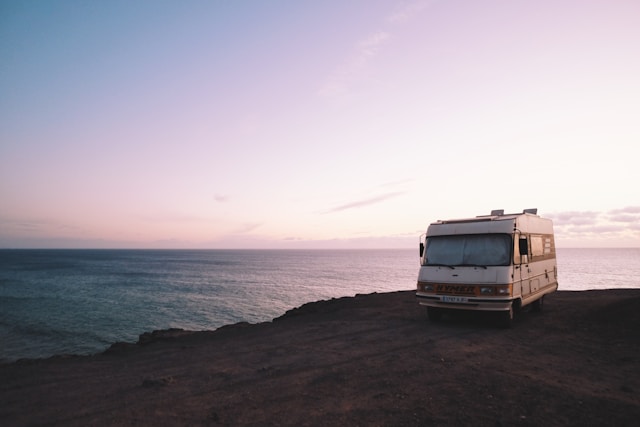Picture this: You’re surrounded by towering pines, a starry sky overhead, and the gentle hum of nature—your camper nearby, fully powered without a single cord or generator. Welcome to the world of camper solar panel kits, where adventure meets innovation. These systems aren’t just a luxury; they’re becoming the backbone of modern, eco-conscious travel. Whether you’re a weekend warrior or a full-time nomad, solar energy unlocks a new realm of freedom. Let’s dive into how these kits can transform your journeys.

Why Solar Energy is Revolutionizing Camping
Gone are the days of noisy generators and costly fuel stops. Solar power offers a silent, clean alternative that aligns perfectly with the ethos of outdoor exploration. Traditional energy sources, like gas-powered generators, disrupt the tranquility of nature with their racket and emissions. Solar panels, however, work discreetly, converting sunlight into usable energy while you soak in the scenery.
For campers, this shift means:
- True Off-Grid Freedom: Park anywhere, from desert vistas to mountain hideaways, without relying on external power.
- Eco-Friendly Exploration: Minimize your carbon footprint while preserving the landscapes you love.
- Long-Term Savings: Swap recurring fuel costs for a one-time investment that pays dividends trip after trip.
By embracing solar, you’re not just powering your camper—you’re championing a greener way to roam.
Top Perks of Investing in a Camper Solar Panel Kit
- Unplugged Adventures, Unlimited Possibilities
Escape crowded RV parks and embrace remote locations. With solar energy, your battery stays charged, whether you’re parked by a lakeside or nestled in a forest. - Budget-Friendly Brilliance
Though initial costs vary, solar panels eliminate ongoing expenses like propane refills or campsite fees. Over time, your wallet will thank you. - Quiet, Clean Energy
Solar kits operate silently, letting you enjoy nature’s soundtrack—crackling fires, rustling leaves—without the buzz of machinery. - Durability Meets Simplicity
Modern panels are built to withstand harsh weather and require little upkeep. A quick wipe-down and occasional system check are all they ask for. - Versatile Power on Demand
From charging drones to running a mini-fridge, solar energy keeps your essentials humming, blending convenience with sustainability.
Navigating the Types of Camper Solar Panel Kits
- Portable Solar Solutions
Compact and user-friendly, these foldable panels are ideal for casual trips. Prop them up at your campsite or stow them in a storage bin—no installation required.
Ideal For: Weekend explorers or those with minimal power needs. - Roof-Mounted Systems
Designed for permanent setups, these panels maximize sun exposure and deliver higher wattage. Perfect for running appliances like microwaves or CPAP machines.
Ideal For: Full-time travelers or families needing reliable, high-output energy. - Flexible Solar Panels
Mold these ultra-thin panels to curved surfaces or irregular roofs. While slightly less efficient than rigid options, they’re a game-changer for unique camper designs.
Ideal For: Vintage trailers or pop-up campers with limited roof space.
Choosing Your Perfect Solar Setup: Key Considerations
- Assess Your Energy Habits: List devices you’ll power (e.g., lights, fridge, laptops). A 200W system typically handles basics, while 400W+ suits heavy users.
- Space and Setup: Measure your roof or storage area. Roof-mounted kits need secure mounting brackets; portable ones require easy access to sunlight.
- Quality Over Quick Fixes: Opt for corrosion-resistant materials and UL-certified components. Brands like Renogy or Jackery are camper favorites.
- Future-Proofing: Consider expandable kits if you plan to upgrade your rig or power needs later.
Installing Your Solar Kit: DIY or Pro?
DIY Route:
- Position panels where shadows won’t fall (avoid roof vents or AC units).
- Use tilt brackets to angle panels toward the sun seasonally.
- Connect via a solar charge controller to safeguard batteries.
Professional Help:
- Hire certified installers for complex setups, especially if integrating with existing inverters or lithium batteries.
Keeping Your Panels Peak-Performing
- Monthly Cleanings: Use a soft brush and water to clear debris. Avoid abrasive tools.
- Battery TLC: Check water levels in lead-acid batteries monthly; lithium batteries need minimal care.
- Winter Wisdom: In snowy climates, tilt panels to shed snow buildup, or use portable kits indoors.
Stories from the Solar-Powered Trail
🌲 “We boondocked for three weeks in Utah’s backcountry—solar kept our fridge cold and cameras charged!” – Jake & Mia, CO
🚐 “Our roof-mounted panels handled everything, even during a week of rain. Best upgrade ever!” – Priya, AZ
🔋 “Portable panels saved our trip when the campsite’s power failed. Never leaving home without them!” – Diego, NM
Embrace the Solar-Powered Nomadic Life
Choosing a camper solar panel kit isn’t just about cutting cords—it’s about redefining how you interact with the outdoors. As more travelers prioritize sustainability, solar energy stands at the forefront of this movement, proving that adventure and responsibility can coexist.
Quick Solar FAQs
Q: Can I run an air conditioner with solar?
A: Yes, but you’ll need 600W+ panels and robust batteries. Consider energy-efficient models to reduce strain.
Q: How do clouds affect solar output?
A: Output drops by 10–25%, but quality panels still harvest energy. Pair with a battery bank for cloudy days.
Q: Are solar kits safe for all climates?
A: Absolutely! Most panels endure -40°F to 185°F. Just secure mounts in windy areas.
Q: What if my camper isn’t sun-friendly?
A: Portable panels let you chase the sun. Park in open areas or use extension cables for ideal placement.